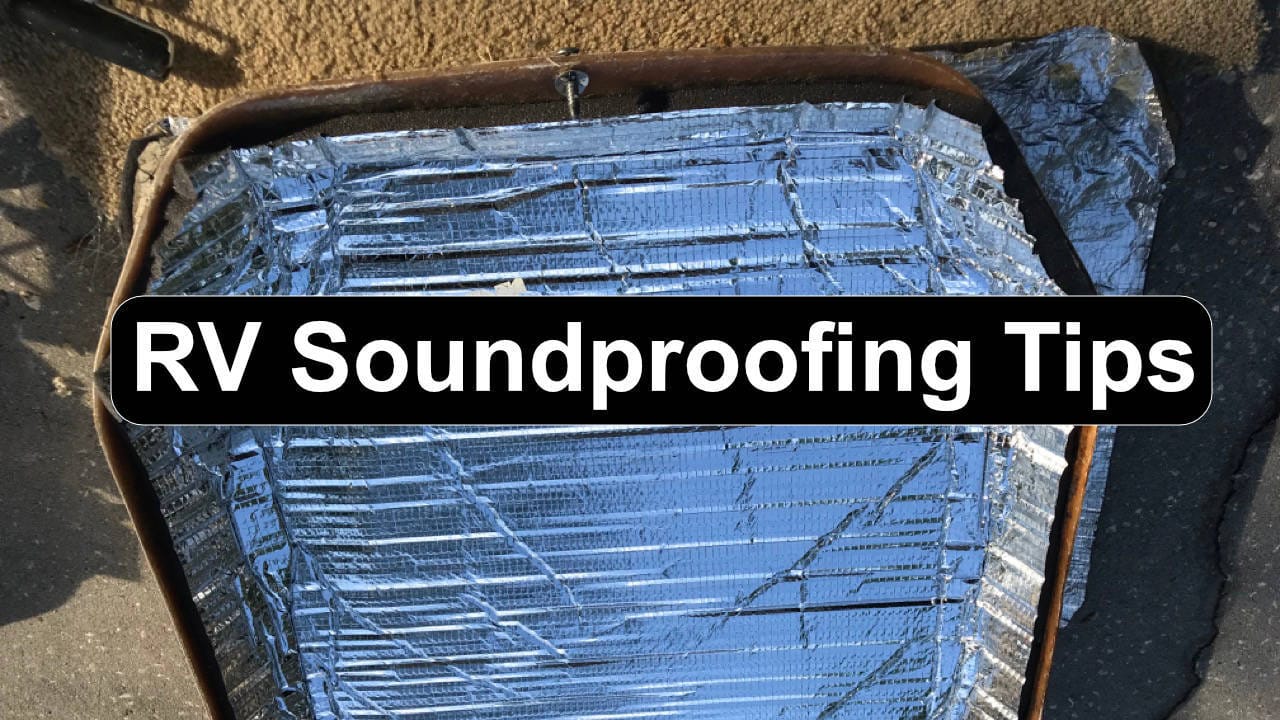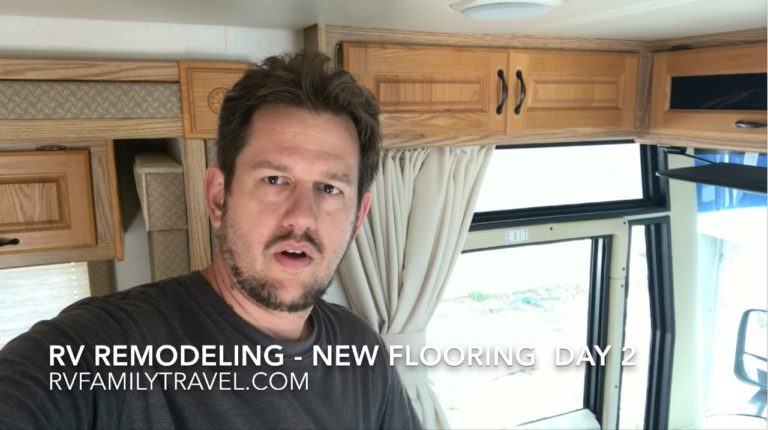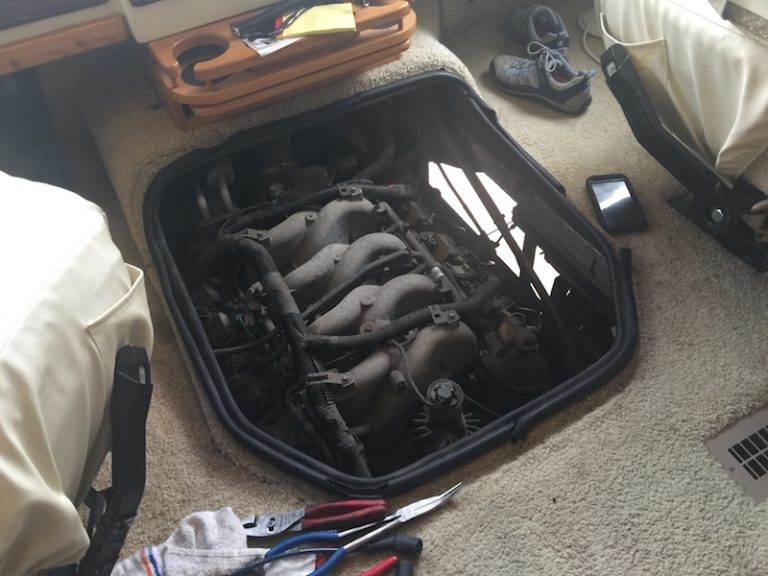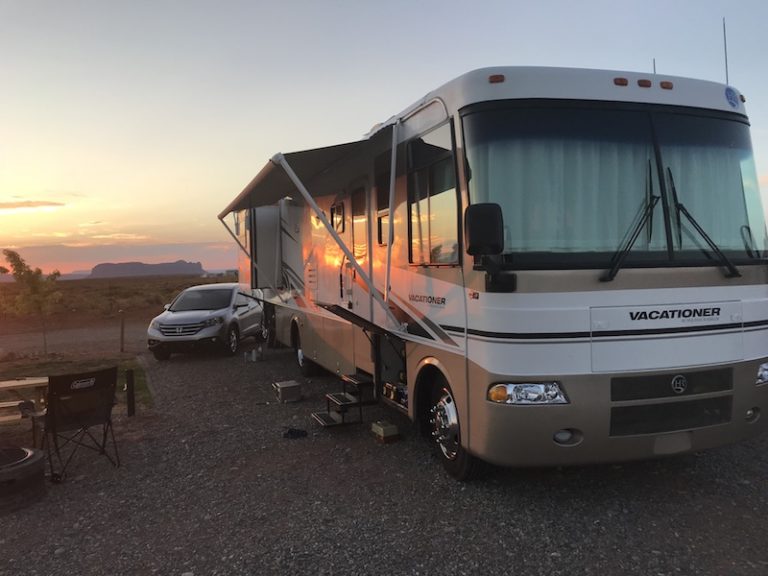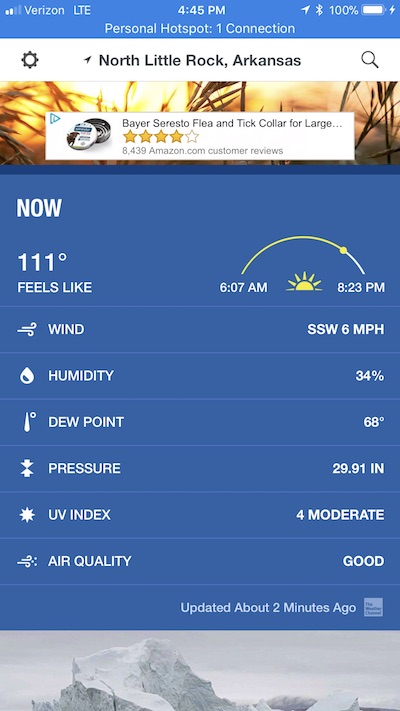Tips For Making Your RV Quieter (RV Soundproofing)
There’s a lot of great things about RVs, but silence isn’t usually one of them.
From the road noise, the squeaky rattles as the rig goes down the road, to campground noises from the weather or noisy neighbors, one quickly finds that their RV isn’t exactly a utopia of silence. ????
Frankly, I’ve found that newer RVs can be even worse. I think the overall drop in interior quality and cheaper parts just means even more rattles and squeaks going down the road. And if you’re driving a Class A motorhome, you’re also sitting right over top the engine (if it is a gas rig), so the noise can be quite annoying.
Let’s do a bird’s eye overview of your RV and let me offer some advice on how you could quiet that thing down. ????
Quieting Down The Driver Cockpit
As mentioned, engine noise is a big one. Especially for Class A’s. That doghouse cover between the front seats is often just a piece of plastic and offers very little noise insulation from that engine which sits right below you.
When I remodeled my 2002 HR Vacationer, one of the things I did was install hood liner soundproofing on the underside of my doghouse cover. Not only does it protect against heat (keeping the cover cooler), but it dampens the engine noise substantially.
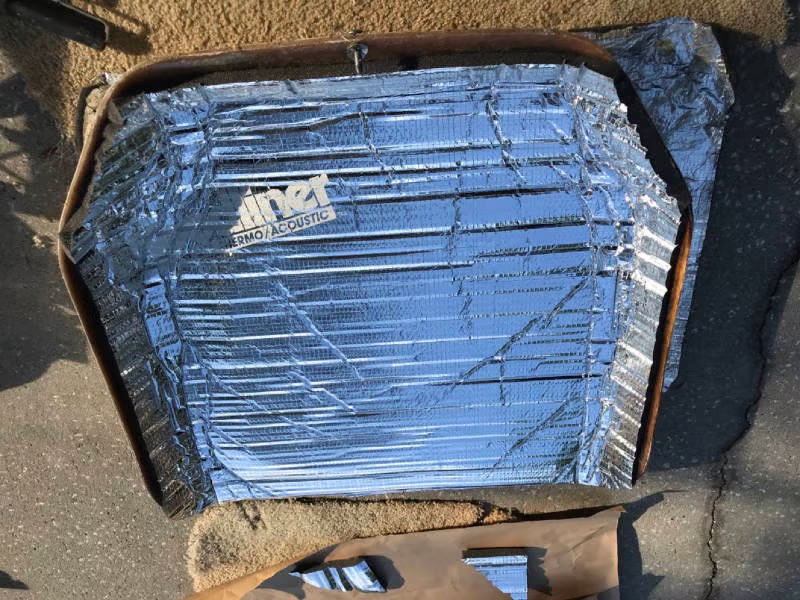
Since I was also reflooring the RV, I used the opportunity of the carpet being ripped up to install sound deadening material under the carpet.
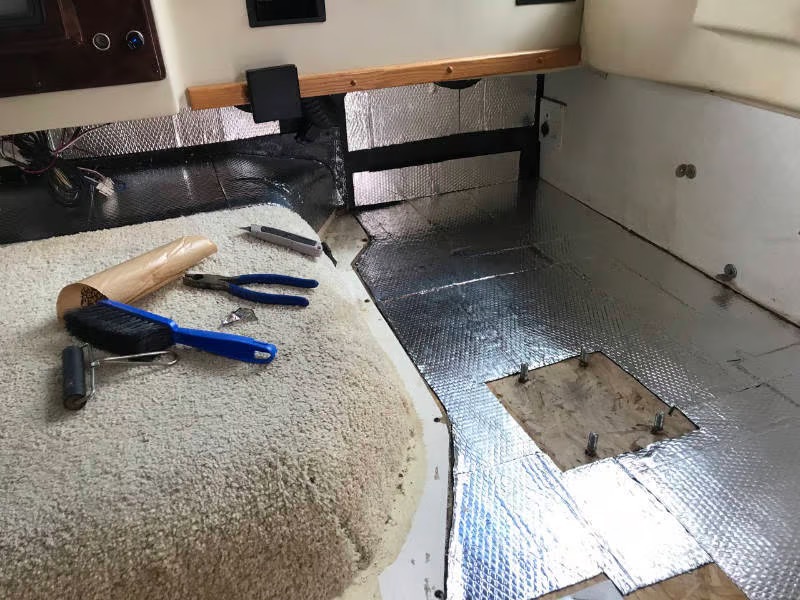
If went down on the floor under the feet, up the firewall, beneath the seats… all the way to where the interior cabin begins. Between this stuff, the carpet padding and the carpet itself, there’s a nice layer of noise protection from the engine compartment below. It definitely makes for a quieter cockpit.
Another option might be to use mass loaded vinyl (MLV) and put that down under all of your carpet and flooring.
Quieting Down Your RV Interior
When you’re driving down the road, you’re going to get all kinds of rattling as things move around. Cabinets and doors might move around, the stovetop rattles around, and plastic pieces squeak. Fun times. ????
My first piece of advice is… get used to it. ???? Seriously, you’re basically vibrating a house down the road so you can’t expect it to be tight like the inside of a car. Have realistic expectations.
But, in terms of some things you could do…
You can install either little rubber pads or felt strips on things that move a lot – especially in between parts that might rub or bump together.
Your stove top probably has rubber grommets on the pieces that sit atop the stove. You could make sure those are in good shape and replace if they’re not or they’re missing. Another little trick is just to place a towel or other soft material underneath that metal top while driving so it prevents it from clanking badly.
Another thing to check is that all your weatherstripping is fresh and tight. For instance, loose stripping around your entry door could cause the door to have more vibrations while driving down the road. Not only that, but poor weatherstripping lets in more exterior noise overall (even when parked).
Quieting Down Your RV Air Conditioner
Those ACs can be real beasts when they’re on. The fans are literally right there and they are significantly louder than an AC in your home.
First off (and once again), have realistic expectations. An RV air conditioner is always going to be fairly loud. It is just the nature of these things. But, here’s some things you can look into…
First, you can make sure the A/C is tightly secured to the rooftop and that the nuts and bolts are all tight. On a related note, you may want to check the rubber cushion to make sure it isn’t worn out.
If you want to get surgical, you could look into the fan motor. The fan motor is your biggest source of noise with these things and sometimes they go bad and make too much noise. Sometimes, you can just replace the fan motor with a quieter one. Check the fan blades, too, because too much gunk buildup causes an off-balance situation with the blade and that can cause more noise.
You can also look into getting an RV silencer unit. These are after-market addons for your A/C that will help muffle the noise right inside the unit itself as well as direct air more directly into the ductwork. For some, these can remove 8-10 decibels off the noise level of your A/C. One such option is from “Wacko” (funny name, heh?).
Of course, age of your A/C matters, too. While all of these things can make a racket, some are better (and quieter) than others. And sometimes replacing really old units with brand new ones does give a quieter experience.
Quieting Down Your RV Generator
They key here is mostly about sound dampening… just like for your main engine compartment (see above).
If you install hood liner insulation in your generator compartment, that can do a lot to help keep noise from coming inside while the generator is on. Similar on the generator compartment door as that can help subdue noise to the outside.
You can also install a muffler on the exhaust pipe for your generator and it would have the same effect as a muffler does for your car.
More Specialty (And Expensive) Options For RV Soundproofing
Of course, where there’s a demand, you will find companies looking to sell solutions. And RV soundproofing is no different.
What I’ve mentioned above are mostly DIY and more affordable options. However, there are indeed specialty items like noise paneling, sound barriers, special carpet padding, etc. You can research these items and see if it might be worth it for you.
Other Resources On RV Soundproofing
Gone with the Wynns is a sailing channel now, but when they were still RVing they put together a nice video about their experience trying to quiet down their Class A gas rig…
Soundproofing a Motorhome. Reduce Internal Noise – Classic Motorhome Owner

